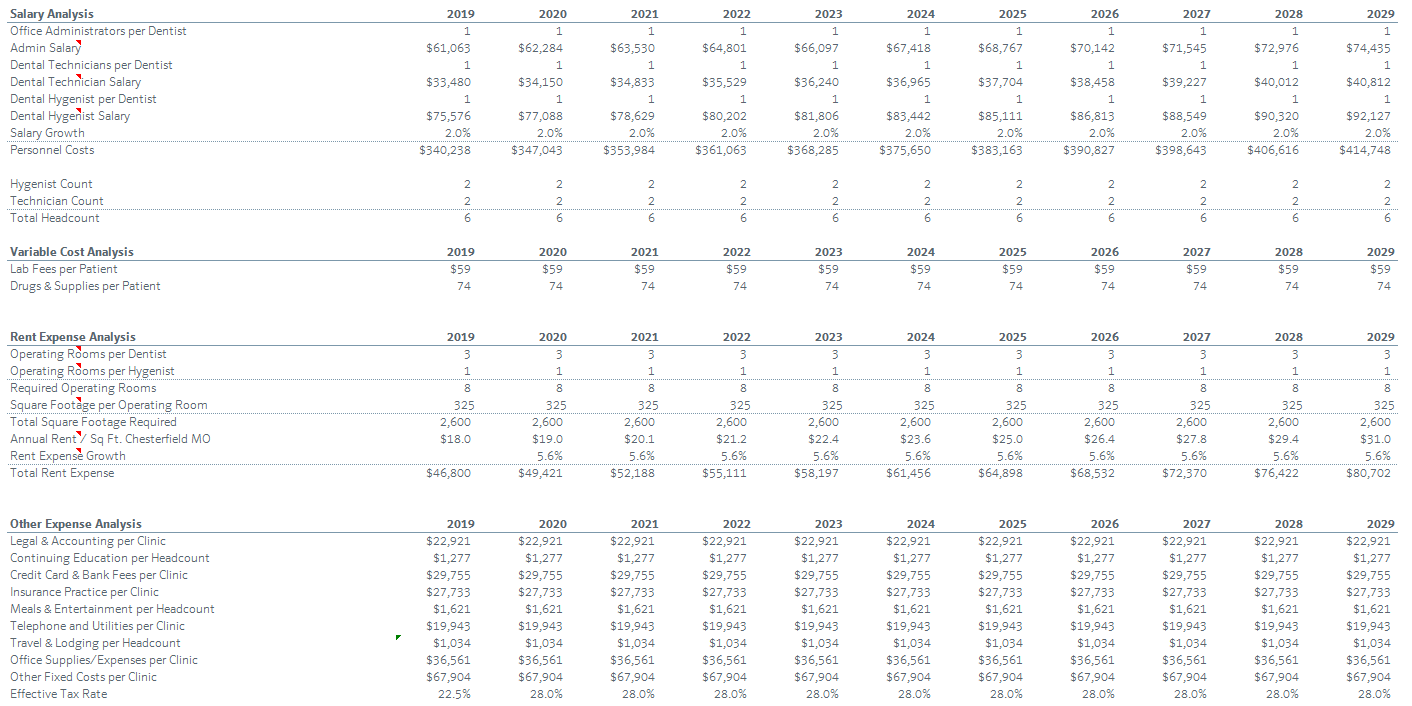With about $500 billion of uninvested capital, private equity firms are looking to invest in middle-market dental practices and dental businesses like yours.
In this article, Nick Barker of Huron Capital presents specific strategies for accelerating value creation with a private equity partner.
As the owner of a dental practice, a dental products business, or a dental service business, you’ve surely heard about the overabundance of private equity firms looking to invest in middle-market companies like yours. With about $500 billion of uninvested private capital, competition among these firms can be fierce. With all this capital, along with a favorable debt market, company valuations are on the rise. With valuations rising, it is more challenging for private equity firms to achieve targeted returns for investors, sellers, and management teams. As a result, it is more important than ever for a private equity firm to develop and execute a detailed plan to create value that includes specific strategies for driving both revenue and profit growth. And it is especially important for business owners who are planning to reinvest or “roll” a portion of the proceeds from a sale of their company to be in lock-step agreement with the strategy and its execution.
This article will introduce three fundamental areas of value creation that go beyond a private equity firm’s initial equity investment. These three areas are as follows:
- operational
- financial
- strategic
This artilce will also discuss specific levers within each category that can be pulled to help accelerate earnings and create value for you, your management team, and your private equity partner.
Operational levers
An operationally focused investment approach is perhaps the most important tool of value creation. Operational levers can include:
- increasing clinic utilization by addressing daily treatment practices around scheduling, office process flow, and operatory setup
- improving purchasing scale efficiencies (primarily in dental supplies and lab supplies)
- adding additional clinic or manufacturing capacity
- building or improving upon customer service
- installing or updating IT systems that track and monitor operational and clinical key performance indicators (or “KPIs”)
Example: Huron Capital partnered with the management team of a short-term cosmetic orthodontic solution company marketed to general practitioner dentists. The orthodontic company’s lab technicians use a patient’s impression to create a mold, place brackets, and create a custom delivery tray, which together with product literature and other supplies are assembled and shipped to the dentist. Its lab and inventory management operations were originally housed in two separate locations in upstate New York. While the facilities were sufficient to meet the near-term needs of the business, they were not in an ideal location for recruiting talent (the facilities were located in a small town 30 minutes from the closest major city), and were not designed to house a dental lab operation. Furthermore, senior management was located in Texas, not at the production facility. With operational support and capital investment by Huron Capital, the company consolidated two locations in New York into a single facility in Texas, and moved from a highly inefficient physical layout to a building designed specifically for the company’s operations that expanded operating profit margins by approximately 90 basis points.
Financial levers
In an effort to enhance profitability through traditional routes like manufacturing efficiency improvements, it is not uncommon for a business owner to overlook the meaningful impact of financial levers. These may include:
- revenue cycle and working capital management
- alternative debt financing
- capital investment or divestment
- sales and leasebacks of real estate
- management of the fixed/variable cost structure
It may also include additional focus on recurring, nonproject-oriented revenue streams to reduce cyclicality or seasonality.
Example: Huron Capital partnered with the management team of a dental service organization formed to provide practice support services to a network of independent dental practices in Florida, Arizona, and Virginia. Revenue cycle (the time between when services are rendered and when final payment is received for services performed) is critical to the profitable operation of a dental practice. A shorter cycle means payment is received faster, which increases liquidity and reduces the likelihood of collection problems and write-offs. With Huron Capital’s strategic and capital support, the company invested in resources to focus on collections. It developed systems and processes to ensure accurate billing on the front end and more aggressive collection activities on the back end. These efforts resulted in an more than 30% decrease in the company’s revenue cycle, from 32 days to 22 days, freeing up cash and working capital for other revenue-generating investments (for example, expanded marketing and branding strategies to drive new patient volume).
Strategic levers
Strategic levers can be extremely powerful and transformative, yet are often overlooked entirely by business owners. This is certainly not surprising, as an owner’s plate tends to be full in managing the critical day-to-day operations, and additional resources are often unavailable to tackle vital strategic questions. Strategic levers may include:
- increasing patient volumes by adding clinical staff or additional operatories
- extending a company’s geographic footprint by affiliating with practices or acquiring businesses in other markets
- implementing new services (adding an endodontic program, for example)
- building a more sophisticated marketing strategy and business development process
Example: Huron Capital led the recapitalization of a dental service organization formed to provide practice support services to dental specialists in pediatric dentistry and orthodontics headquartered in the Midwest. Prior to Huron’s investment, the company existed in concept only and had no operations. With Huron’s involvement, the company developed a growth strategy focused on the highly fragmented pediatric dental market to build an affiliate base of dental practices in metropolitan areas, maximizing operational oversight and driving marketing efficiencies by clustering 5–10 affiliations within a 50-mile radius. In less than two years, the company has completed eight affiliations and now has 18 affiliated offices across five states. In addition to providing the capital necessary to affect these strategic affiliations, Huron also helped the company develop processes to grow the affiliation pipeline and enhance execution efficiency, develop a marketing plan for each office to drive new patient flow, and build out a call center to proactively manage lead generation.
Conclusion
As a business owner, choosing the right private equity partner is crucial to ensuring meaningful value creation, and you should feel challenged to select an investment partner with a common partnership philosophy who will bring more than just an “equity check” to the relationship. This is especially true if you are planning to reinvest a portion of your ownership from the sale of the company and share in the future upside. If the company, in collaboration with a private equity partner, management, and the board of directors, is successful at identifying and pulling one or more of the operational, financial, or strategic levers noted above, you could be poised to make significantly more than your original sale proceeds. Said another way, why settle for just 1 or 2 bites when you can enjoy the entire apple?



































